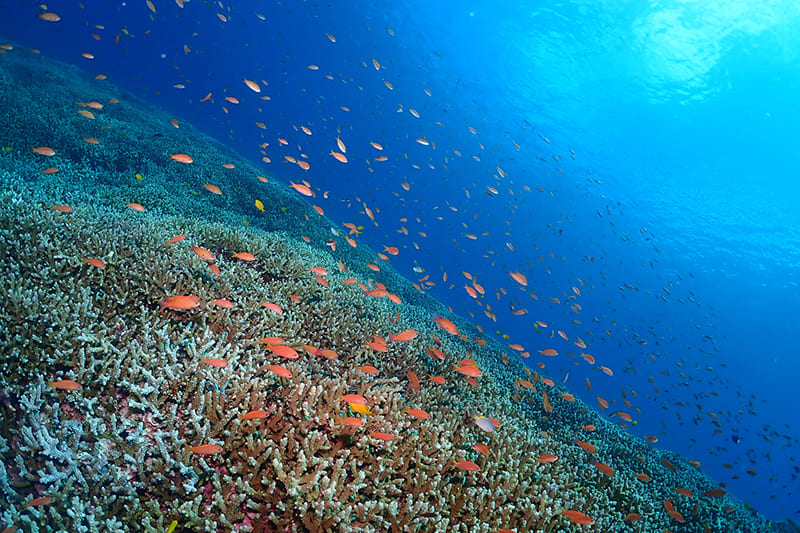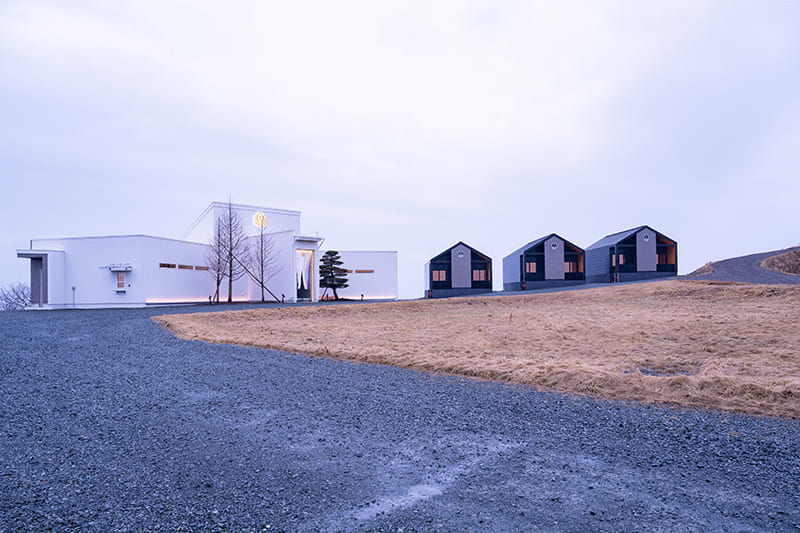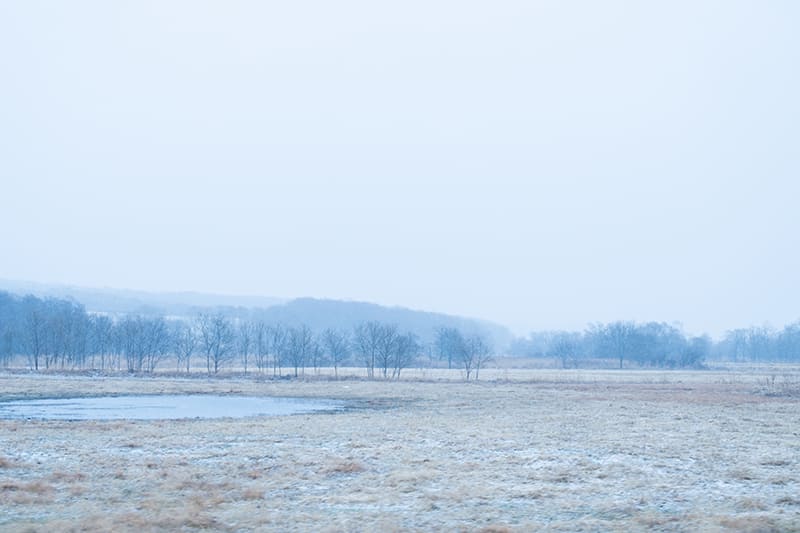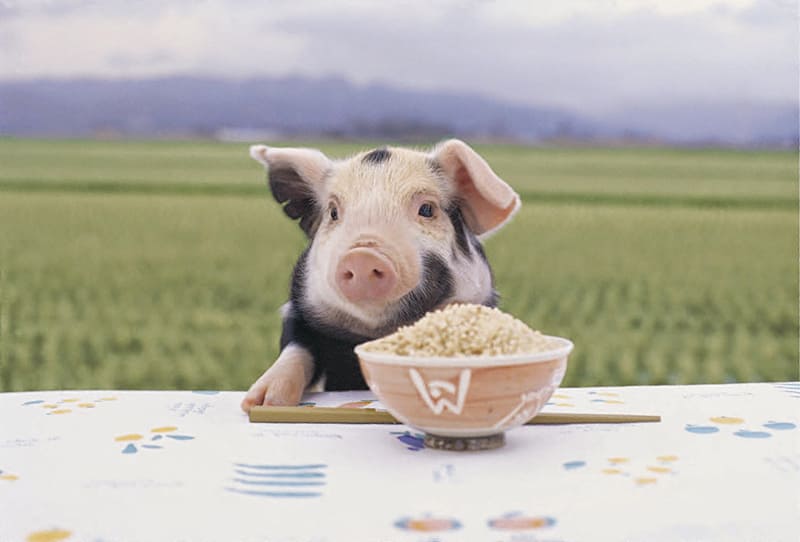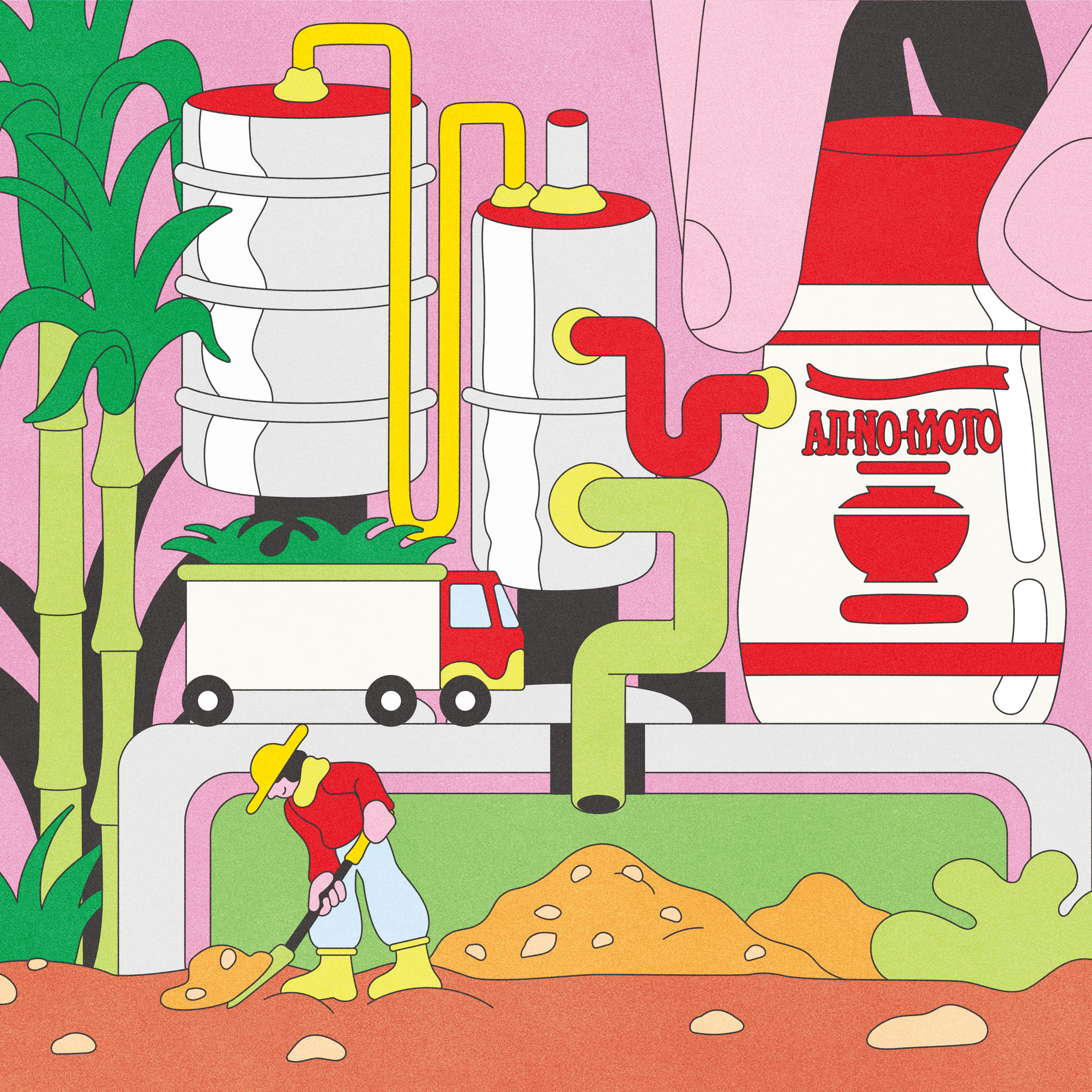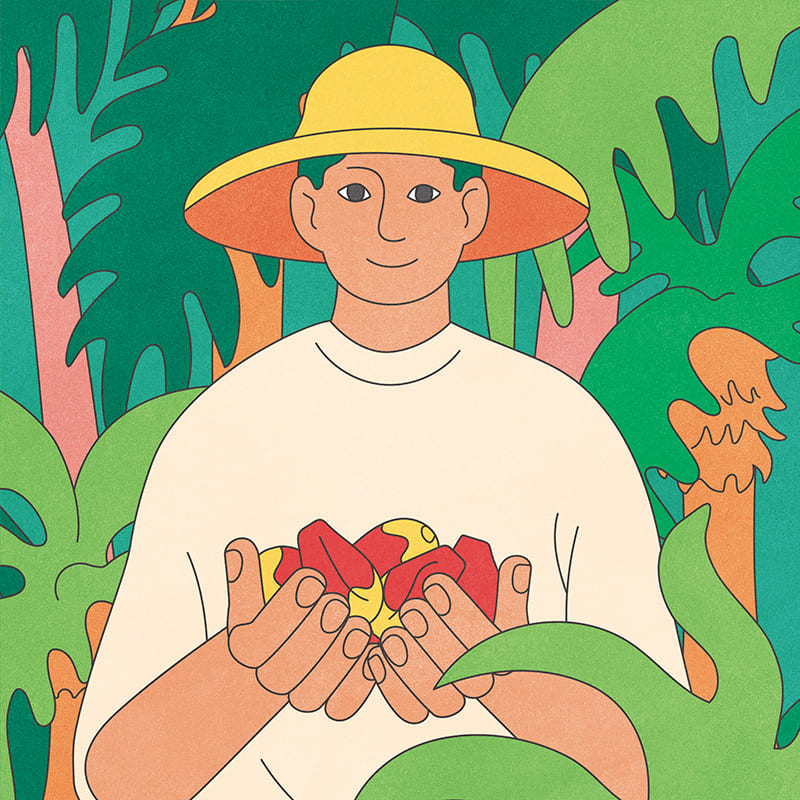February 22, 2024
‘Rice for feed’ could save Japan’s livestock industry
SATOYAMA CAPITALISM 2024 VOL.5
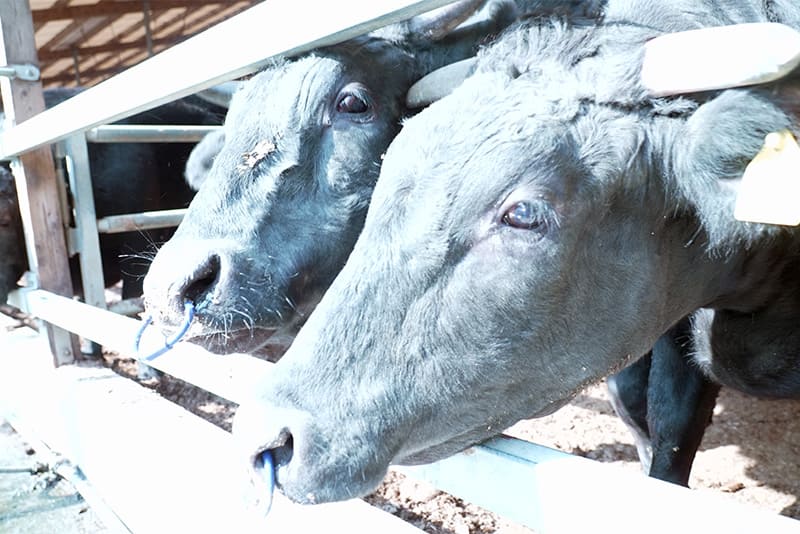
COURTESY: KAMICHIKU GROUP
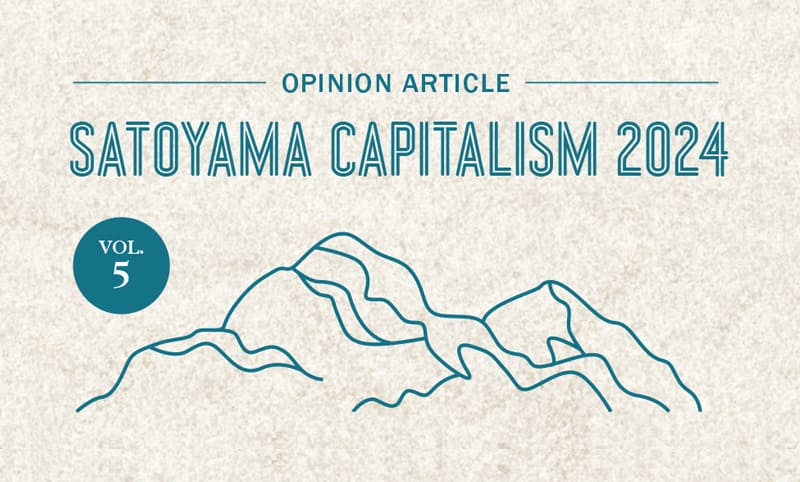
He calls himself a cattleman. Since at least the Edo Period, Japan has followed a particular method of raising cattle, distributing them and selling them for their meat. Through awareness of having inherited this spirit, he hopes to overcome the difficulties his industry now faces.
He is Masashi Kamimura, head of the Kamichiku Group, a Kagoshima-based livestock group that directly deals with everything from the birthing of calves to producing delicious meat. I believe it was around the beginning of 2017 when I first met him, near Haneda Airport, and we hit it off immediately. I still remember how we parted with a firm handshake and vowed to meet again.
At that time, I was immersed in the works of the scholar Tsuneichi Miyamoto, a giant of Japanese folk customs. What particularly impressed me was one interview with an old man, a former bakurō cattle trader living under a bridge in the mountains of Shikoku. He talked about how the system of breeding and distribution managed by the bakurō was indispensable for raising cattle. However, the old bakurō was humble, saying he led his life just listening to everyone and doing work that someone had to take care of. From this self-deprecating story, Miyamoto vividly described how the bakurō were the key to making beef production possible, and beyond that were supporters of the weak who had difficulty being heard in the community, or even their own families.
I explained to Mr. Kamimura my interpretation of this story: “The disappearance of the bakurō may have led to the current plight of Japan’s livestock industry as U.S. methods of feeding and raising cattle came to dominate production after the war.” He replied: “Actually, we are descendants of the bakurō. We do our work with that pride in our hearts.
In April 2017, I visited one farm in the Kamichiku Group where cows give birth to calves as naturally as possible and also with ultimate efficiency. I was glued to the gentle eyes of a calf running around and drinking milk. When each fattened cow is sold, the farmer’s efforts and love can be seen in the high quality of its meat. A person in charge who knows the cows’ pedigree laughed and said, “If you start talking about that with President Kamimura, it won’t end.’’ I was shown one carcass of an animal considered to be one of the best of the best. The beauty of the cut surface of the meat took my breath away.
The highlight was seeing Kamichiku’s treasure: the stud bull. I was overwhelmed by its extraordinary size and above all its beautiful form. That night, while eating a beef dinner, I told Mr. Kamimura how beautiful I thought it was. Hearing this, he looked satisfied. “The one with legs like a thoroughbred? That’s our breeding bull,’’ he said with great fondness.
Japan’s livestock industry has fallen into strange turmoil due to the Russian invasion of Ukraine. Hearing that branded wagyu beef from all over Japan was at risk of disappearing due to the soaring price of imported feed, I visited the site of the Kamichiku Group again in 2023.
Mr. Kamimura was waiting at a restaurant the group recently opened where you can choose your favorite cut and have it grilled on the spot. His commitment to serving meat in prime condition, from cows he had put his heart and soul into raising, was clear. His grilling skills were exquisite. While stuffing ourselves with meat and rice, he invited me to take a closer look at the front lines of the battle against the rising cost of feed.
We visited a site where they produce cattle feed from various sources. In addition to grass and corn, they source weeds and potato residue from a shōchū factory — quite a diverse set of ingredients. And now they are aiming for the full-scale utilization of rice. In my previous column, I wrote about using rice as feed for pigs, but the hurdles for cattle are even higher. Pigs are omnivorous, but cattle cannot digest rice as is. The group needed to try various fermentation methods in an effort to prove that cattle could eat rice. After several months they succeeded.
Why rice, and why now? Looking not only to mitigate the plight of livestock farmers, the Kamichiku Group is also focusing on rice farmers, who have relied on the crop for so long but are now doing ever worse due to insufficient sales, compounded by a lack of successors and farm closures.
Mr. Kamimura thought of how the group could support both rice farmers and the region as a whole at the same time. Kagoshima’s rice lacks brand power. However, if cattle were fed rice and the quality of the meat improved, beef could become a new source of Kagoshima brand power. The synergy would be immeasurable. Aging local agricultural cooperatives, one after another, now want to participate in “rice for feed.”
The situation surrounding imported feed is beyond complicated. The Kamichiku Group compiled data and described the damage caused in recent years by both frequent droughts and heavy rains in Australia, which has been growing as a source for dry grass imported to Japan. Also, when the market price of wheat rises, farmers stop growing grass and switch to wheat, reducing grass production.
The circumstances surrounding shipping also have cast a shadow. Due to supply chain disruptions caused by the coronavirus pandemic, feed transportation was affected by a shortage of available container ships until around the summer of 2022.
North American corn production has fallen due to droughts, and also hurricane damage in some areas at harvest time. And the market price has risen due to falling inventories amid strong demand. Although Japan did not import wheat from Ukraine, countries that relied on Ukraine switched to wheat produced in the United States and Brazil, and that did directly affect Japan. The weak yen dealt the final blow.
Meanwhile, the domestic corn production that the Kamichiku Group promotes has been hit hard by wild boars, deer and a pest called the fall armyworm.
All of these factors have contributed to the trend toward rice for feed that rice farmers hoped for as well.
The current situation is dire. However, I felt that Mr. Kamimura’s positive attitude on eventually finding a way toward overall optimization could be called the wisdom of Japanese livestock farming since the days of the bakurō.
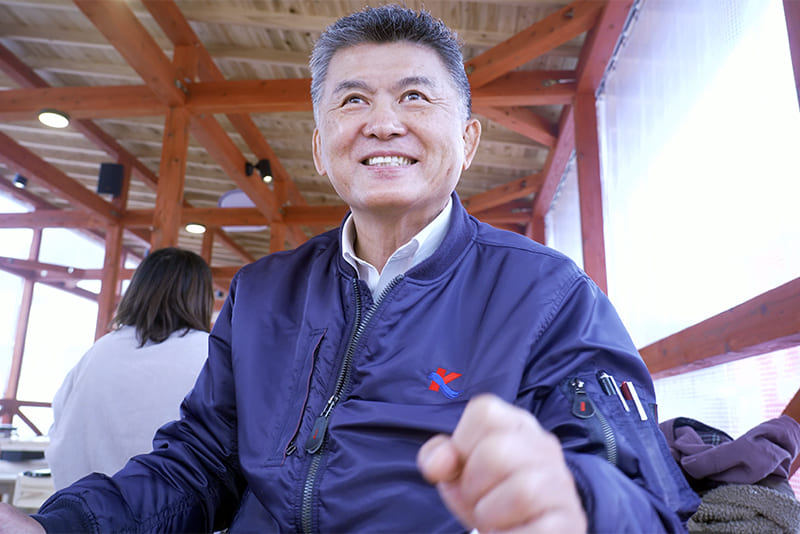
COURTESY: KAMICHIKU GROUP
KYOSUKE INOUE
Writer and TV director. Born in 1964, Inoue joined NHK in 1987 after graduating from the University of Tokyo. For over 30 years, he produced “NHK Special” and other documentaries and authored books. He currently is an adviser to the Sustainable Japan Network, a project of The Japan Times. The series Satoyama Capitalism 2024 will introduce readers to people who live by values other than “money first,” whom he has been covering for many years.
米の飼料化が、日本の畜産を救う。
1987年のNHK入局以来30年以上に渡り、ドキュメンタリーを中心に番組制作に関わってきたテレビディレクター/作家の井上恭介による全6回の連載コラムの第五回目。今回は鹿児島の企業集団〈カミチクグループ〉の牛肉に対する取り組みを紹介する。
井上は2023年、この会社を再訪し、様々なものを牛の飼料にする現場を見た。牧草やトウモロコシ、焼酎工場からの芋の搾りかすなどはもちろん、「米」を飼料にする取り組みを知る。牛は豚に比べ、米をそのままやっても牛が消化できない。そこで発酵のさせ方などに工夫が必要だが、カミチクは飼料化に成功したという。輸入飼料に頼る状況のなかこの会社は、米農家を支え、共に地域を保つために役に立てないかを考えた。牛に米を食べさせて肉質が良くなり、牛肉が地域の発信力となれば、相乗効果は計り知れない。稲作農家も「米の飼料化」を希望しているという。この会社の着眼点と取り組みは、日本畜産の知恵といえるだろう。
Return to Sustainable Japan Magazine Vol. 33 article list page

